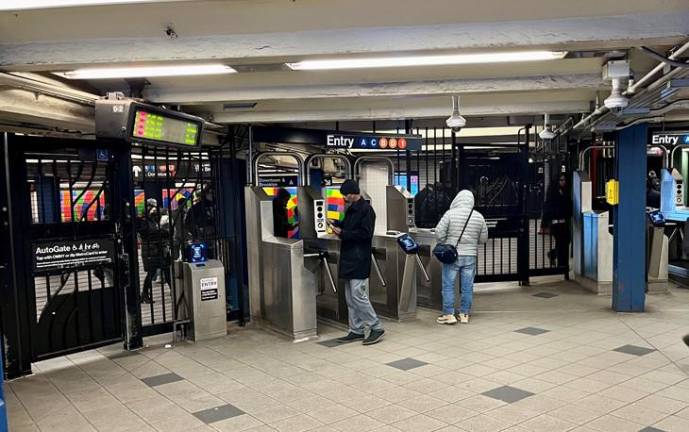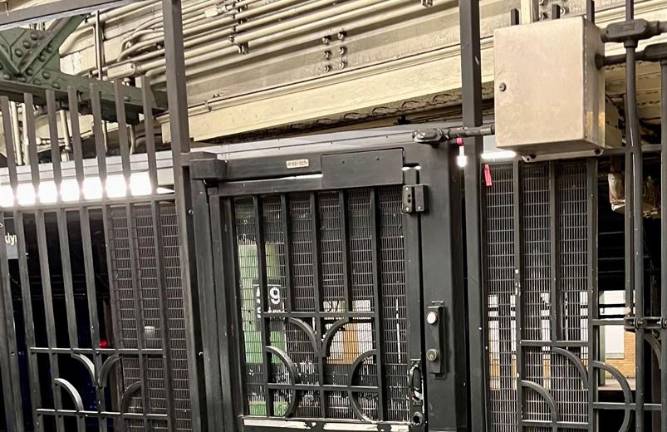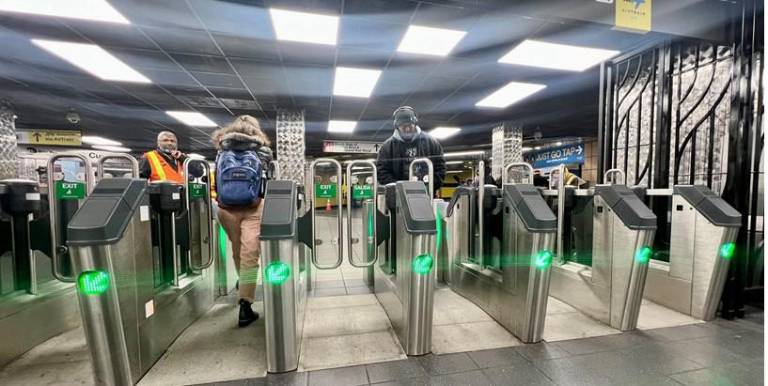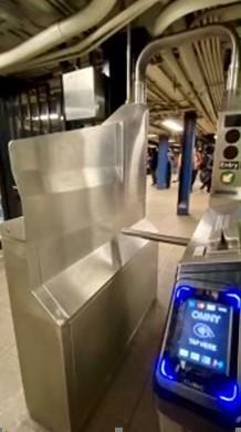MTA: Fare Evasion Expected to Top $700M in 2023
Losses to fare evasion are now expected to top $700 million in 2023 the MTA said, with open emergency gates on subways billed as the “superhighway of fare evasion.” An experiment to force riders to wait 15 seconds before an emergency door will open is among the solutions the NYC Transit is now testing.




With fare evasion expected to top $700 million once all the figures for 2023 are tallied, the MTA is experimenting with new gates to thwart “turnstile jumpers” and a 15-second delay on emergency gate subway exits to deter “opportunistic fare evaders.”
MTA chairman Janno Leiber conceded that open subway emergency gates were now “the superhighway of fare evasion” that has become the number one source of fare evasion. He called fare evasion an existential threat to the MTA’s ability to provide first class public transit.
He said a majority of subway fare evaders are just walking through open exits rather than the old fashioned “turnstile jumping” of the past. When straphangers see the open door, after someone has used it to exit, many just walk through, even if they could easily afford to pay the fare, he said in remarks delivered following an MTA board meeting on Jan. 29.
Another illegal entry ploy is called “backcocking,” when the turnstile arm is pulled slightly back, then forward on a turnstile and the non-payer slips through the gate, jumping over, or ducking under turnstiles.
One does not have to spemd much time underground to see the rampant fare evasion in action. On Thursday, January 31 in a half hour span from 4:30 p.m. to 5 p.m., Straus News observed three different turnstile entrances on the north side of the 59th Street/Columbus Circle Station.
At each entrance, evidence of entering emergency gates illegally, vaulting over turnstiles, or backcocking turnstiles occurred within minutes of our arrival.
At the northernmost entrance on the west side of Broadway, three people entered the large metal exit gate after a train passenger used it to depart the station..
Across the street, at the main east Broadway side entrance, a man vaulted over a low turnstile. Although the turnstile was only a short range from an NYC Transit Police office at the station, the jumper checked to make sure there were no police officers within sight range,
Below the traffic island entrance at 60th Street and Broadway, two people came to the turnstile—one paid, the other backcocked.
These observations illustrated the MTA’s revenue drain. With over 470 stations on the NYC Transit subways, events like these demonstrated how easy it is to avoid paying and contribute to the massive revenue shortfall from fare evasion.
Gothamist, an online news service, reported that based on the number of tickets issues, more than 50 percent of evasion tickets were issued at just a quarter of the city’s stations. Three southern Queens stations yielded between 50 and 60 tickets per 100,000 riders. Twenty six stations tracked between January and September 2023 including the Lexington Ave-63 St.station in Manhattan, had no tickets issued.
What will fare evasion solutions look like?
Revised emergency gates should be on-line within a few weeks at three subway stations, including Lexington at 59th. Each will have gates with time delays of 15 seconds after opening and shutting, which have been approved by New York State, which has jurisdiction over the MTA. The MTA is hoping that rather than push through the emergency gates with an annoying delay, they’d opt to hasten on their way by using the turnstiles.
“We’ve noticed at previous pilots for delayed gate openings of 4-6 seconds, people don’t wait there; it encourages them to use the turnstiles. New Yorkers like their time.” noted NYC Transit President Richard Davey at the MTA committee meetings on Monday, January 29.
With more complex turnstile issues, different approaches are being evaluated.
The simplest design to combat illegal use is making mechanical adjustments to restrict turnstile arm mobility to lessen use without paying. It would be a $2 million job to overhaul to change every turnstile at every station. NYC Transit President Davey noted at the Monday committee meeting that the work will pay for itself. Full completion of this project is expected to be finished sometime next year.
Next on the list, high vertical turnstile fins will make vaulting them much harder. In use at some stations, including the Eighth Avenue entrances at Columbus Circle. This should discourage vaulting over turnstiles to evade the fare.
A technology in use at some subway stations, including Manhattan’s Fulton Street, are wide aisle gates, with large vertical paddles, instead of turnstile arms, to prevent jumping over or under to beat paying the fare. They are wide enough for riders with a small wheeled suitcase or other small item not to have to push them through separately. At the Sutphin Boulevard station in Jamaica Queens, JFK-bound riders like these new gates and MTA CEO Lieber noted that fare evasion is down by 20% at that station, while also noting, after the release of a video on social media, that someone was able to compromise the fare gate, changes need to be made with this system.
“We are going to continue to experiment” Lieber noted in a press conference following the board meeting
What’s next? A Request for Information has been sent out by NYC Transit to manufacturers to design a new system turnstile that can withstand fare evasion and stop the financial drain evident now.